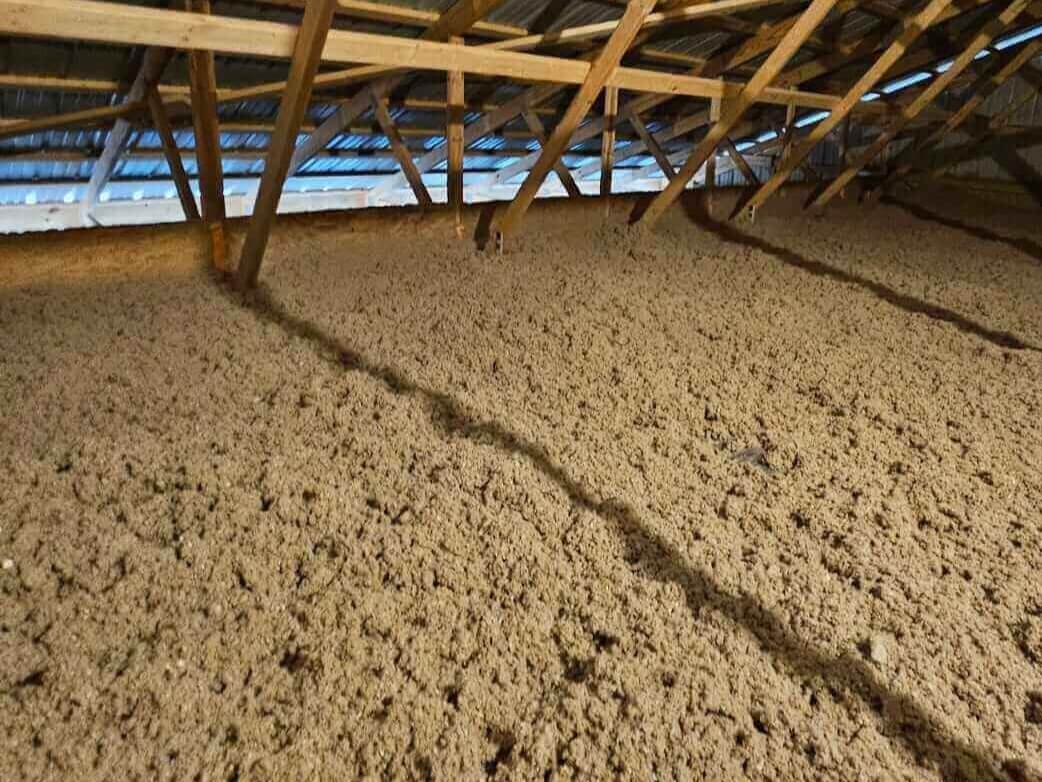Search for topics or resources
Enter your search below and hit enter or click the search icon.

When investing in an insulation upgrade, you want to weigh all the pros and cons. What will the short-term and long-term benefits be if you choose blown-in insulation? Is blown-in a good choice for your home in the long run, or will blown-in settle over time?
South Central Services has insulated hundreds of new and existing homes near Harrisburg, Pennsylvania. While our first choice for insulation performance is spray foam, we do install blown-in insulation in attics.
By the end of this article, you will understand:
Don't have time to read right now? Check out everything you need to know at a glance.
When installed correctly, blown-in insulation should last between 10 to 20 years before experiencing settling. How the material is installed from the beginning has a major impact on how much it will settle. But even the perfect application of blown-in insulation will eventually lead to settling.
No matter what type of blown-in insulation you choose, settling will occur. Settling is in the nature of the blown-in product. Both fiberglass and cellulose insulations will settle over time.
Think about what blown-in insulation is. A loose-fill product is packed into bags in a cube shape.

When it is time to install, this packed product is then broken down and fluffed into a loose-fill state.

Then, the loose-fill is blown into an even layer across an attic floor. The insulation particles are stacked on top of each other but are not compressed.

Over time, the weight of the top layer of insulation can compress the insulation beneath.
Since settling is a normal part of blown-in insulation, is there any need to be concerned about your insulation settling over time? Even though settling is natural and expected, it is still something to pay attention to.
When blown-in insulation settles, your attic loses insulation performance. Settling compromises the R-value of your insulation. R-value is the primary measure of insulation performance, and attics need to maintain a certain R-value to prevent unwanted heat transfer.
Luckily, settled blown-in insulation can be solved by topping off the insulation. When settling inevitably occurs, a fresh layer of blown-in can restore the lost R-value. Topping off your insulation isn’t free, so it is crucial to understand the maintenance costs of blown-in before installing it in your attic.
 If you’re determined to use blown-in for your attic, then you want to know how to avoid settling and topping off your insulation for as long as possible. While it is true that all blown-in insulation will eventually settle, the product is more likely to settle when disturbed.
If you’re determined to use blown-in for your attic, then you want to know how to avoid settling and topping off your insulation for as long as possible. While it is true that all blown-in insulation will eventually settle, the product is more likely to settle when disturbed.
Think back to that even layer of insulation. Settling over time is due to the weight of the layers of insulation. But think about someone walking through or touching the insulation. You can imagine how the tiny insulation particles would redistribute! When disrupted, everything shifts, and the loose-fill product finds nooks and crannies to land in.
You can preserve your investment in blown-in insulation by leaving your attic alone. Maintenance costs will be postponed for as long as possible if the only variable in settling is time.
Even the blown-in Nu-Wool insulation we install at South Central Services will fall prey to settling. While our blown-in insulation also settles, we still find ways to maximize the performance of blown-in. For our team, maximizing blown-in performance means installing an airtight seal on the attic floor.
When the blown-in eventually settles, the air-seal on the attic floor prevents air leakage. This airtight seal limits the impact of settling on your energy bills and home comfort.
An airtight seal will not stop settling or maintain your R-value. However, an air-seal will slow convection and radiant heat transfer. Blown-in insulation cannot stop those forms of heat transfer on its own. By adding an airtight seal, settling makes less of an impact on your home.
Blown-in insulation is going to settle. It is the nature of the product. If you want to prevent settling for as long as possible, avoid disturbing your attic insulation. We also recommend pairing your blown-in insulation with an air-seal on the attic floor. Air-sealing prevents air leakage and supports blown-in despite settling.
Now that you know why blown-in insulation products settle, your next step is to:
Disclaimer: While we strive to publish information accurate to building science, local building codes and standards supersede our recommendations.
Alexis has been fascinated by spray foam insulation since 2018. When she isn’t thinking about insulation, Alexis is geeking out over storytelling and spreadsheets.
Topics: